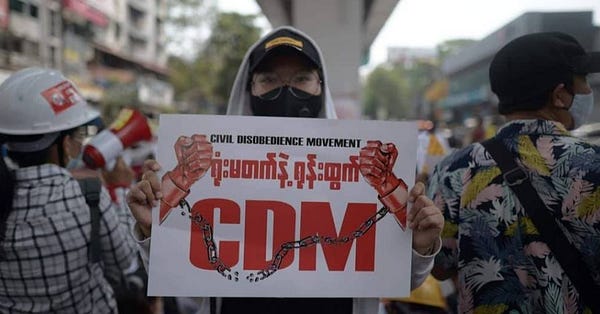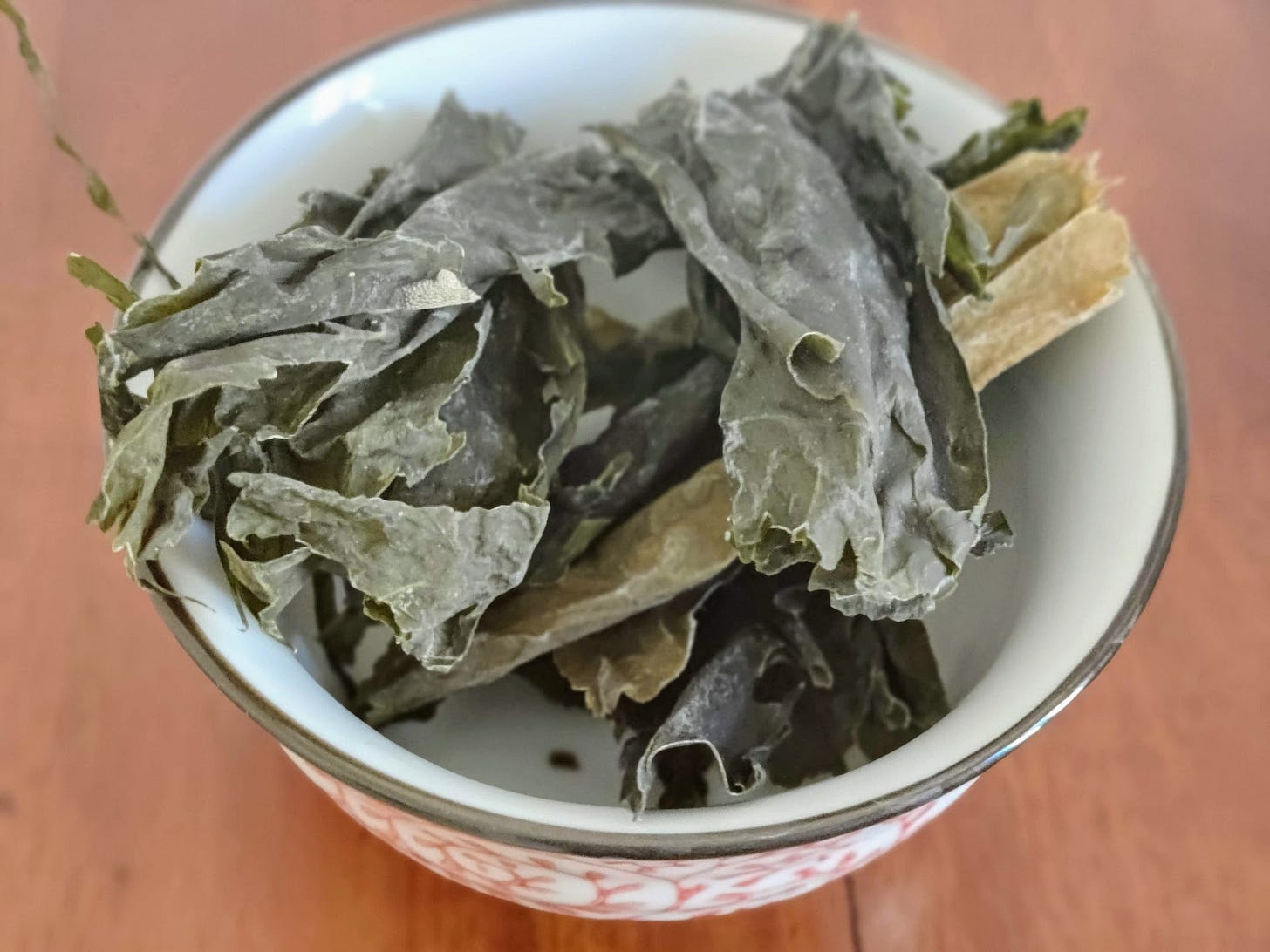Kelp Part II - Not So Fast!
A newsletter about food systems, climate change and everything connected to them
Two issues ago, I wrote about the potential of algae to fix a lot of the food/climate problems we are facing today, from making cows less gassy to using them to power planes, trains and automobiles, and as food and fertiliser. So I feel duty-bound to present the other side of this super-rosy picture and of course, there is one, and it mainly has to do with using them to reduce methane emissions from cattle.
This piece in WIRED gives clear-eyed look at the news that got a lot of people excited - that putting a bit of seaweed to cow feed could reduce methane emissions from cattle by more than 80% - even though the sample size was pretty small and the duration they measured quite short.
The article talks about the limitations - the scale of algae that would be required to feed the world’s 1.5 billion cows, that this option is only practical on feedlots and not feasible to add to diets on the pasture, and there would still be emissions from other sources including manure, fertiliser, and transport of animals and the meat.
FutureFeed newsletter dived deeper with a Q&A with the journalists who wrote the WIRED piece. It’s pretty long, but also very interesting, particularly this point, which applies to journalists including me: “Climate media right now is covering meat the way they would have covered fossil fuels 25 years ago, by focusing on all of this great stuff the industry is doing.”
Shout out to Chris for pointing these out!
How to regulate plastic
Ahhh… plastic. It’s very handy but also extremely problematic - it’s made from fossil fuels, it pollutes our waters and ecosystems and it doesn’t biodegrade. There’s so much of it too, and having grown up and lived in Asia for decades, I’m aware of how much plastic we use when it comes to packaging food and drinks (anyone who’s ever bought anything at a 7-Eleven in Asia knows what I’m talking about).
At home, we’ve been a lot more mindful of our plastic usage but became less successful in the past year as we finally started ordering delivery from local restaurants during the lockdowns as a way to help them survive, and almost every meal came with an assortment of single-use plastic packaging.
We now think of which places use paper instead (but, gasp! they’re not much better, see below) before we order something. Imagine the amount of single-use plastics that have been produced for PPE (masks, shields, etc). Yes, it was necessary but still a worry.
Well, the U.N. Environment Programme (UNEP) and the World Resources Institute have released a legislative guide on how to regulate single-use plastics, and it is exactly what it says on the tin so the language is appropriately governmental and lawyerly.
So unless you’re either of those two, skip the report and read the blog which lays out very clearly four ways to tackle plastic pollution.
If you do want to dip your toes into the report, Chapter 3 is probably the most interesting because it has a lot of examples of how to do it and where such regulations exist. There’s also a good list of laws and bills around the world in Annex 2.
There is some really interesting - and slightly uncomfortable - information there too, including problems with alternative plastics, like how most plastics labelled as compostable can be broken down only in industrial composters.
In addition, some studies have apparently shown paper or cotton bags have higher carbon footprints than plastics, because more energy and water are required to produce paper bags and growing and processing cotton is highly-resource intensive, and need to be used multiple times - 3 for paper, 131 for cotton - for their carbon footprint to drop below that of single-use plastics. (Sad face emoji)
Alarming air quality in parts of Sub-Saharan Africa
Air pollution is a big issue globally and early last year when major economies ground to a halt during the pandemic lockdowns, we saw first hand how many of our cities are so much nicer without this hazy fog hanging above us. But most studies and news reports focus on big cities in Asia like in China, India and Thailand or in the U.S. and Europe.
A new study led by Columbia University, with support from two local universities, looked at two metropolises in Sub-Saharan Africa - Kinshasa, capital of the Democratic Republic of the Congo, and Brazzaville, capital of the Republic of Congo - with a total population of 14 million and came up with what they say is the “first-ever multi-year” dataset for ambient (outdoor) air pollution.
An aside - ambient air pollution is air pollution in outdoor environments. Here’s a WHO factsheet on it and yes agriculture plays a role, even in urban areas, because air pollution can travel large distances.
Two particle sizes are widely monitored: PM10, coarse particles of 10 microns or less in diameter; and PM2.5, fine particles of 2.5 microns or less in diameter, about one-thirtieth of the width of a human hair. Exposure to PM2.5 can lead to cardiovascular and respiratory diseases and cancers.
Anyway, back to the study, which began in March 2018 and used low-cost sensors, and the results are pretty troubling.
They found that PM2.5 is up to five times higher than WHO guidelines during the dry season - June, July, and August - and while it is lower in the remaining months, thanks in part to rainfall, it is still more than four times higher!
The study also found that last year’s stay-at-home and lockdown directives in response to COVID-19 corresponded to a 40% decrease in PM2.5.
The full paper, published in Aerosol and Air Quality Research, is here. It’s an important study because cities in Sub-Saharan Africa are growing fast and strategies are needed to deal with worsening air pollution.
Horse-powered farming
This week, Inkcap Newsletter featured a farm in Dartmoor in southwest England that swapped tractors for horses and found they not only have better soil now but also reduced fossil fuel use.
Part of the reason for improved soil quality is because some industrial tractors weigh around 20,000 kilograms while the average working horse weighs in at under 1,000, which means the soil is less compressed, according to Ginger Clark, the writer.
Of course, it’s not all straightforwardly great - it never is - and there are certain drawbacks and constraints, particularly in terms of how many hours of work horses can put in versus a machine. But it is definitely an interesting case study for smaller farms.
Also, Inkcap is great. It focuses on nature, ecology and conservation in the UK but lots of the issues it features are applicable to other parts of the world.
Biden’s Summit coming up
Well, the official name is Leaders Summit on Climate but Biden is holding it, so I’m calling it Biden’s Summit. It’s in two weeks - April 22 and 23 - so if you want to follow virtually what happens at the event, now would be a good time to put it in your calendar. See the list of attendees - including Brazil, Saudi Arabia and China - and other details here.
A little bit on Myanmar
In case you’re wondering what is still going on in my home, yeah, things are still pretty awful. But I’ve recently written something that’s positive - a silver lining amid so much horror, if you will. You can read the story as well as its importance to me and why I wrote it in this thread.


As always, have a great weekend! Please feel free to share this post and send tips and thoughts on twitter @thinink, to my LinkedIn page or via e-mail thin@thin-ink.net.





